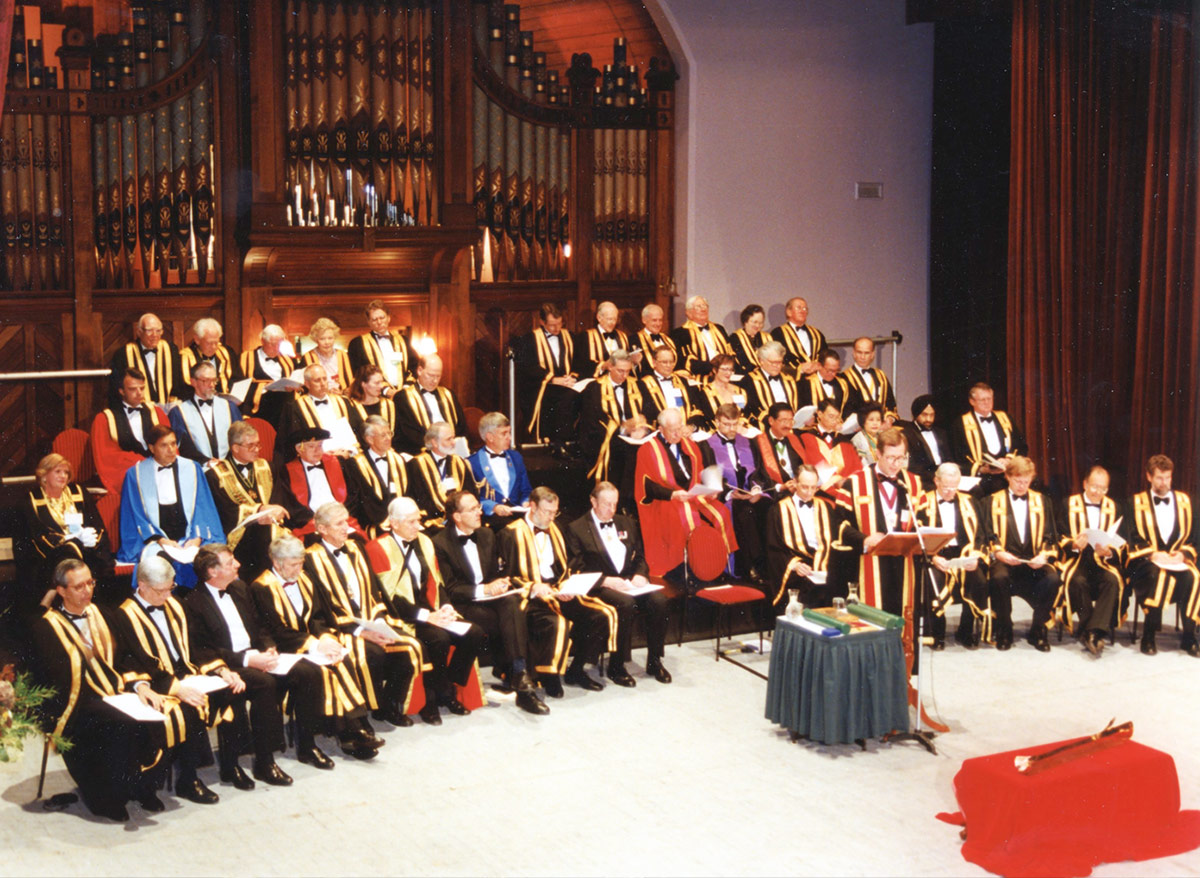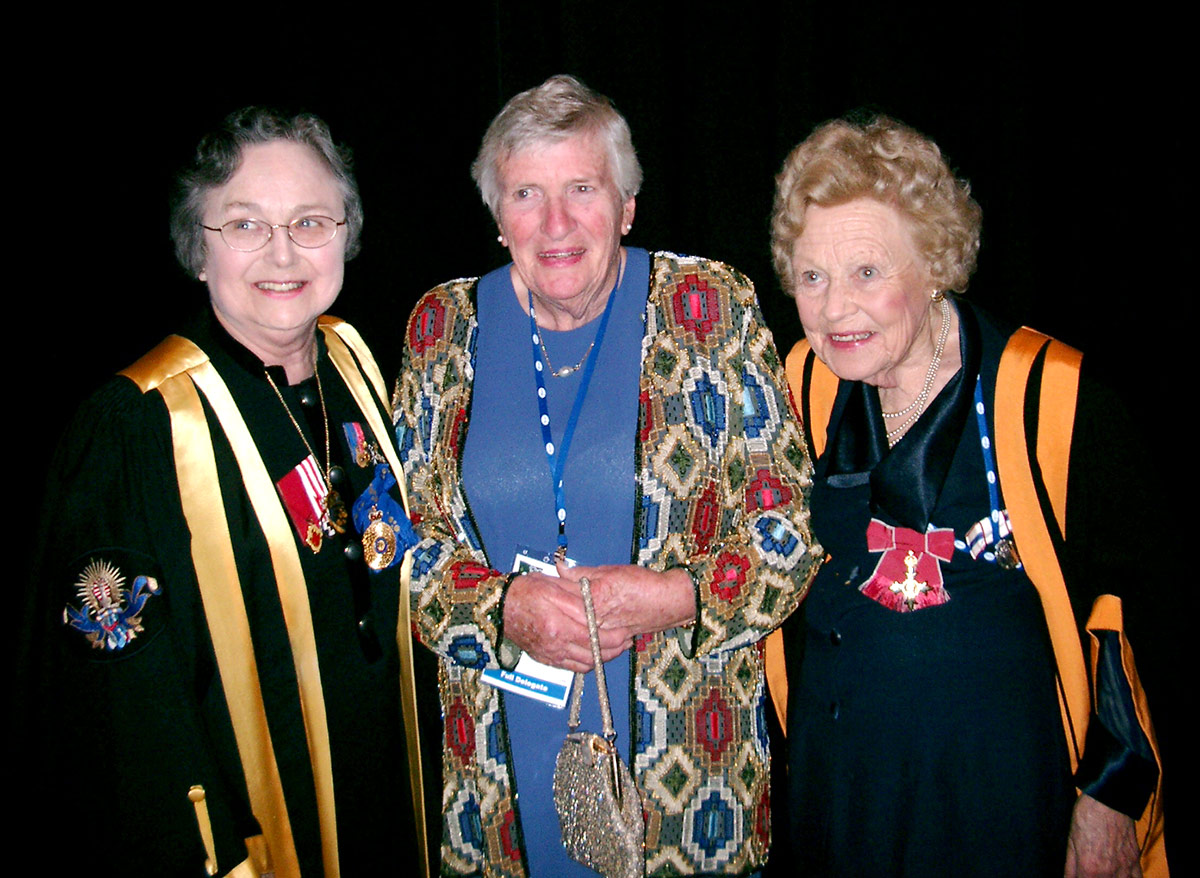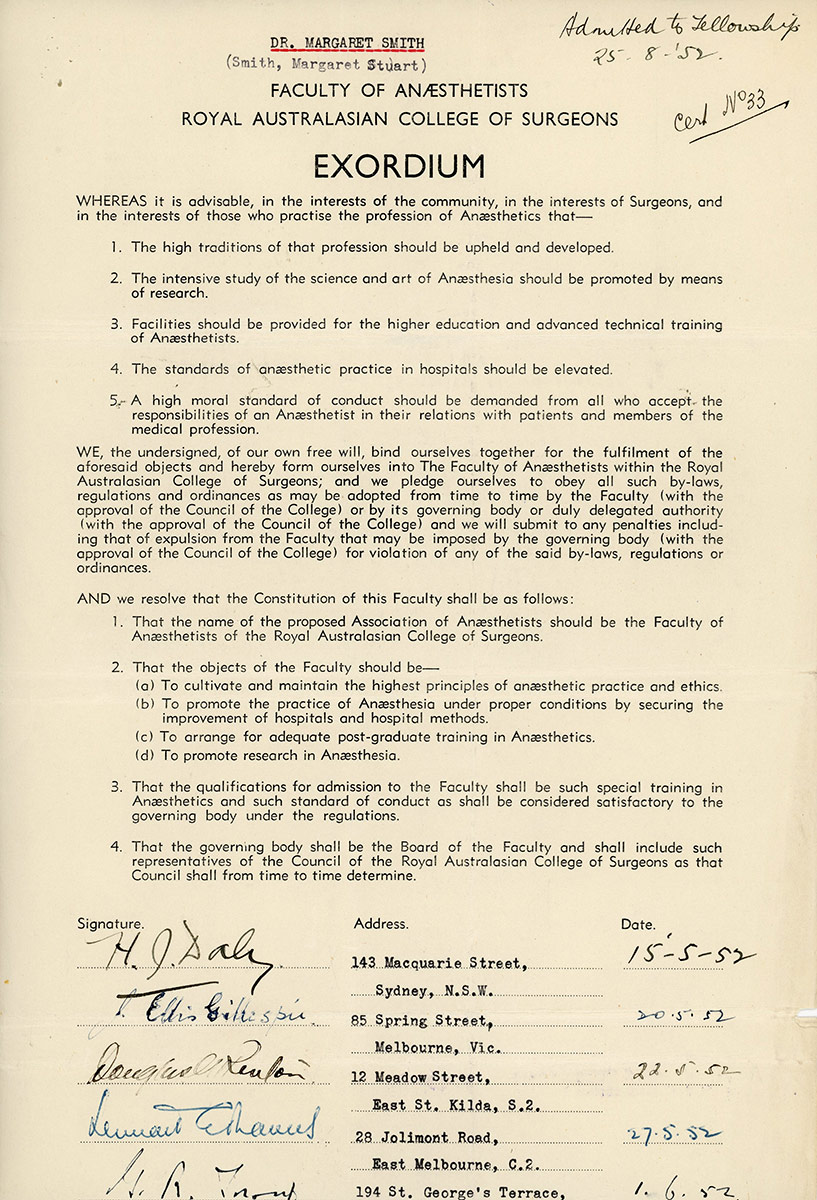Name: Margaret Stuart Smith (Riddell)
Qualifications:
MB ChB – Victoria University and University of Otago (1936)
DA RCP+S – London (1939)
Date of Birth: 13 April 1912
Date of Death: 7 August 2007
Margaret Stuart Smith (Riddell) was born in Wellington, New Zealand on April 13, 1912. She led a remarkable life dedicated to the practice of anaesthetics. After graduating from the University of Otago in 1936, Smith searched for postgraduate degrees in anaesthesia. She eventually gained her Diploma in Anaesthetics from the Royal College of Surgeons and Physicians in London. Smith worked in the United Kingdom during the war greatly advancing the role of anaesthetics. She returned to New Zealand in 1947 and shared the knowledge she had gained overseas to benefit her patients, especially children. Smith represented anaesthetics on a number of society boards and championed women’s rights during her lifetime. Her achievements were recognized with Fellowships and an Order of the British Empire.
Can you add any details to this biography?
If so, complete the Contributor Form.
Margaret Stuart Smith was born on April 13, 1912 in Wellington, New Zealand.[i] Her surname before marriage was Riddell. After attending Chilton House in Wellington for secondary school, Smith enrolled in Victoria University for her medical degree.[ii] During this degree, she transferred to the University of Otago graduating in 1936 with her MB ChB, Bachelor of Medicine, Bachelor of Surgery.[iii] Her first professional appointment was as House Surgeon in Wellington Hospital from 1937 to 1938.[iv] Here she met George ‘Eric’ Anson. Her passion for anaesthetics grew from this encounter. As there were no anaesthetic postgraduate courses available in Australia or New Zealand, Anson encouraged Smith to apply in the United Kingdom. She wrote to the Royal College of Surgeons in London who responded with available courses at Guy’s Hospital.
In 1939, Smith left Australia and travelled to London. She completed her Diploma in Anaesthetics with the Royal College of Surgeons and Physicians in London in 1939.[vi] Smith remained in the United Kingdom during World War II first as senior anaesthetist at the Leicester Royal Infirmary. Between 1940 and 1947, Smith worked at the Great Ormond Street Children’s Hospital and as Senior anaesthetist at the Bangour Hospital.[vii] Amongst her many achievements, Smith was responsible for establishing an anaesthetic department at the Emergency Medical Service department attached to the Edinburgh Royal Infirmary.[viii] Here she assisted many plastic surgeons reconstruct the faces of soldiers returning from war with battle wounds.
Smith returned to New Zealand in 1947 working as Consultant Anaesthetist at the North Canterbury Hospital and also in private practice.[ix] She continued her professional relationship with the Canterbury Hospital from 1977 as their Honorary Consultant Anaesthetist to the Board of the Hospital.[x]
Smith was associated with many professional societies from the 1960s until her death in 2007.[xi] She served as President of the Christchurch branch of the New Zealand Medical Women’s Association (1960-1969), became a life member to the Canterbury Branch Medical Women’s Association and the New Zealand Society of Anaesthetists.[xii] She became President of the latter in 1975.[xiii] Smith was also involved in the Committee of the Mastectomy Rehabilitation Service and represented women on the national council of Canterbury Medical Research.[xiv] Outside of anaesthetics, Smith was very active in promoting women’s rights. She was a committee member of the 1973 International Women’s Year and a member of the Regional Women’s Decade (1976-1986).[xv] These are only a few of the societies Smith was involved in.
For her services to anaesthetics, particular in regard to children, Smith was awarded with Foundation Fellowship to the Faculty of Anaesthetists, Royal Australasian College of Surgeons in 1952.[xvi] She won the Queen’s Jubilee Medal in 1977 and the ANZCA Medal in 2003.[xvii] To add to her impressive resume, Smith also received an OBE (Order of the British Empire) in 1990 for her work in England during World War II.[xviii] She died in 2007, the last remaining Foundation Fellow.
REFERENCES
[i] Margaret Stuart Smith, ‘CV’, ANZCA Archives, Series 11, p. 1. [ii] Ibid. [iii] Margaret Smith, ‘Post Graduate Training in Anaesthesia in the 1930s’, Speech, Presented at the Royal Australasian College of Surgeons ASM in 1994, ANZCA Archives, Series 11. [iv] Ibid. [v] Ibid. [vi] Margaret Stuart Smith, ‘CV’, p. 1. [vii] Ibid. [viii] Ibid. [ix] Ibid. [x] Ibid. [xi] Ibid. [xii] Ibid. [xii] Ibid. [xiv] Ibid. [xv] Ibid. [xvi] Margaret Smith, ‘Exordium’, Application Form, 1952, Geoffrey Kaye Museum of Anaesthetic History: VKGM 6903.30. [xvii] Australian and New Zealand College of Anaesthetists, ‘Reg 12 Australian and New Zealand College of Anaesthetists Medal’, 2015, Online: http://www.anzca.edu.au/resources/regulations/regulation-list/regulation-12.html. [xviii] Ibid.IMAGES
- ANZCA Archives, Series 118, Item Number 328.
- ‘ASM 1994’, ANZCA Archives Series 118, Item Number 252.
- Margaret Smith, ‘Exordium’, Application Form, 1952, Geoffrey Kaye Museum of Anaesthetic History: VKGM 6903.30.




